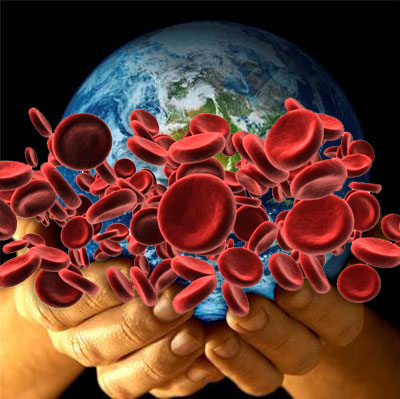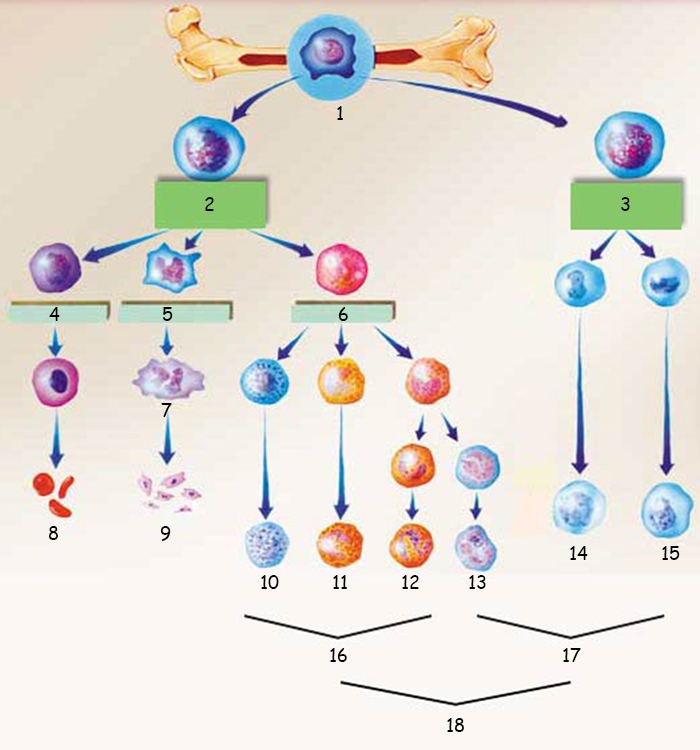Look at yourself in the mirror. Can you feel the presence of a network of crimson red fluid pumping at high speed and pressure just 2 millimeters under the skin of your face? Are you aware of a magnificent network of veins, altogether thousands of kilometers in length, and a pumping heart capable of squirting blood meters high into the air?
No! There is no sign of this impressive movement in your reflection in the mirror. Yet this activity continues ceaselessly while you get on with your life. Even while you are asleep, your heart pumps blood with great power and audible sound known as your heartbeat, and the blood flows at great speed, again with a sound known as your pulse. The chief reason why you are unaware of all this is your delicate skin, created specially for you. This gives you an attractive, ordered and calm appearance while concealing and protecting all this activity beneath it.
This circulatory system is formed collectively by your blood, heart and network of blood vessels, and functions without pause throughout your life. The flowing of the blood, with all its countless features, is one of the matchless proofs of creation.
The blood acts both as a carrier and as a regulator within the body. It flows constantly and has tasks that it will not fail to perform at every moment throughout that journey:
All these are important questions, of course, whose answers shall be examined in this book in detail. Those answers also lead to a very important truth, of interest to our entire lives: Our bodies did not emerge haphazardly. The bodies that we possess have been shaped down to the finest detail. The origin of this body cannot be coincidences as the Darwinists have claimed for more than 150 years. Our origins lie in creation, in which every detail has been specially created, not in a so-called evolutionary process based on chance.
The Lord of that creation is Almighty God, Who has created not just human beings but all living things, the entire universe, and everything that exists.
The miracle in the circulation of the blood is just one of the matchless examples of God's creation. This book shall be examining the details in the blood, its composition and the organs that maintain it in motion, revealing the harmony and flawlessness in those details and displaying the perfection in God's creation. The superior nature of His creation is revealed in the Qur'an, sent down to us as a guide:
 |
Don't they see that God, Who created the heavens and Earth, has the power to create the like of them, and has appointed fixed terms for them of which there is no doubt? But the wrongdoers still spurn anything but disbelief. (Surat al-Isra': 99) |
 |
A child who falls and cuts his knee actually loses millions of erythrocytes and thrombocytes, and thousands of leukocytes. All these cells in the blood are individually important to our lives. |
Blood is the cause not only of life in general but also of longer or short life, of sleep and watching, of genius, aptitude and strength. It is the first to live and the last to die.1
For a long time now, scientists have been trying to produce a substance resembling blood, but they have not been successful.2 The most important reason for this is that the secret of the very special molecules carried in the blood, and the functions these perform, have not yet been fully unraveled. In fact, however, even if the properties of blood were to be fully understood, how to reproduce molecules possessing those features and making them fully functional would still represent a total impasse for scientists.
When we examine the individual elements that make up the blood, this statement will become clearer. Every single molecule has been charged with and shaped for a special purpose. To put it another way, the presence of a special creation in the bloodstream is manifest.
Rather than being simply a fluid, blood is actually a tissue, like the bones and muscles in our bodies.
However, it is very different from these, because the cells that comprise bone or muscle tissues are tightly bound to one another. Despite being a tissue, the cells in the blood move freely, independently of one another. Red blood cells (erythrocytes), white blood cells (leukocytes) and thrombocytes float in the blood plasma.
The human body contains between 5 and 6 liters (1.3 and 1.5 gallons) of blood, which represents between 7 and 8% of the average body weight. Half of the blood consists of the fluid or "watery" part known as plasma. The other half is made up of cells and molecules with various functions. A drop of blood that leaks from your finger because of a tiny cut contains some five million red blood cells, 10,000 white blood cells and 250,000 thrombocytes. In addition, each member of this enormous community has very important duties.3
Furthermore, these cells are constantly being renewed. Every day, 260 to 400 billion new blood cells are produced in the body. This truly astonishing production, which takes place at the bone marrow, the main center, depends on various dividing abilities of special cells known as stem cells. The stem cell is charged with producing the blood cells needed in the body; and the production and work performed by this cell is literally amazing.
 |
The cells in the blood represent only half the volume of blood in the body. A drop of blood contains some five million red blood cells, 10,000 white blood cells and 250,000 thrombocytes. |
The determination of the stem cells in the bone marrow is quite astonishing. Only one out of every 10,000 cells produced in the bone marrow has the properties of a stem cell—a ratio that sometimes falls to as low as one in 100,000. In appearance, a stem cell has no difference from the other cells. Yet it is actually pretty special. It has highly sensitive and vital properties that enable us to survive. This special cell determines the requirements inside the body and then, thanks to its unique dividing ability, sometimes forms red blood cells and sometimes white blood cells—the main elements of the immune system.4
Why does only one out of 10,000 cells take such a decision and possess such ability? You may even be unaware of the existence of these talented cells in your body. This special cell possesses a particular ability to divide, determine the body's needs and give rise to entirely different cells because God so wishes it. This special cell's magnificent organization and abilities permit an endless circulation to take place. The liquid blood continues on its way, always carrying the same amount of blood cells.
Professor Curt Civin, an expert on oncology from Johns Hopkins University who is known for his research into stem cells, describes this special cell thus:
It's the ancestor, the parent of all. It's much like a fertilized egg, only it has fewer choices. It can divide and reproduce itself [self-renew] or it can differentiate into two types of cells, branching like a tree.5
God has created the stem cell especially to be able to fulfill these important tasks. For example, the stem cell acts according to the various chemical and electrical signals it receives from its surroundings. Thanks to the signals that they send to the stem cell, damaged cells report the need for cell production in the body. The new cells produced by the stem cell set out for the site of the damage to replace the damaged cells. In this way, one single stem cell can produce all the different types of blood cells for weeks on end. Red blood cells lost due to bleeding, or white blood cells that die in their battles against infection are renewed and replaced exactly in the right amounts, neither too many nor too few, and exactly at the right time.
Our 21st-century biologists are still trying to decode the chemical language by which stem cells establish dialogue with other cells.6 This process, performed many times at every moment by individual stem cells in the human body, still represents a puzzle for scientists.
How frequently this production should occur is another important question. White blood cells live for only a few hours. They digest a bacterium that has entered the body and soon die. Thrombocytes live for two weeks, and red blood cells for four months. All these cells constantly need to be renewed. Your bone marrow has to produce billions of cells every week. This production is made possible by the regulation and activities of a single main cell.7 Considering its constant activity inside the body and the body's sensitive structure, the fact that this system—which both carries oxygen and protects the body by waging war against its enemies—is under the supervision of specially created cells, is of course considerable food for thought.
The way that an individual cell undertakes all the responsibility for production is of great importance, for it lets us grasp the incomparable beauty in God's creation. At the same time, this perfect system also definitely refutes the claims made by Darwinists, who seek to deny the truth of creation.
From Stem Cell to Blood Cell | ||
 | ||
1. Multipotent stem cells 4. Erythroblast | 7. Megakaryocyte 10. Basophil | 14. B lymphocyte developing in bone marrow 16. Granular leukocytes |
The stages by which the various blood cells form in the red marrow. | ||
1 Alan L. Gillen, Frank J. Sherwin III, Alan Knowles, The Human Body: An Intelligent Design, Creation Research Society Monograph Series: Number 8, p. 120. 
2 Bilim ve Teknik ("Journal of Science and Technics"), Tubitak Yayinlari, February 1998, Vol. 363, p. 67.
3 http://hes.ucf.k12.pa.us/gclaypo/circulatorysys.html
5 Elise Hancock, Johns Hopkins Magazine, "Stalking the Stem Cell," June 1996-http://www.jhu.edu/~jhumag/696web/stemcell.html 
6 http://www.chicagotribune.com/technology/local/chi-0109040232sep04,0,1412918.story
7 Elise Hancock, "Stalking the Stem Cell," Johns Hopkins Magazine, June 1996. http://www.jhu.edu/~jhumag/696web/stemcell.html 